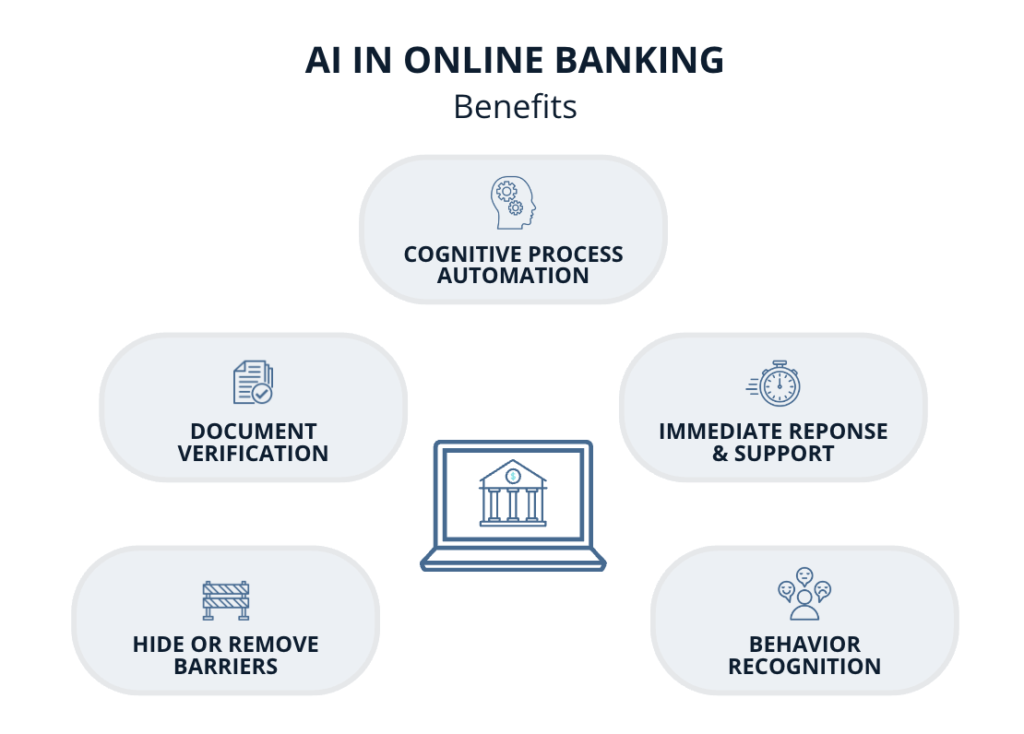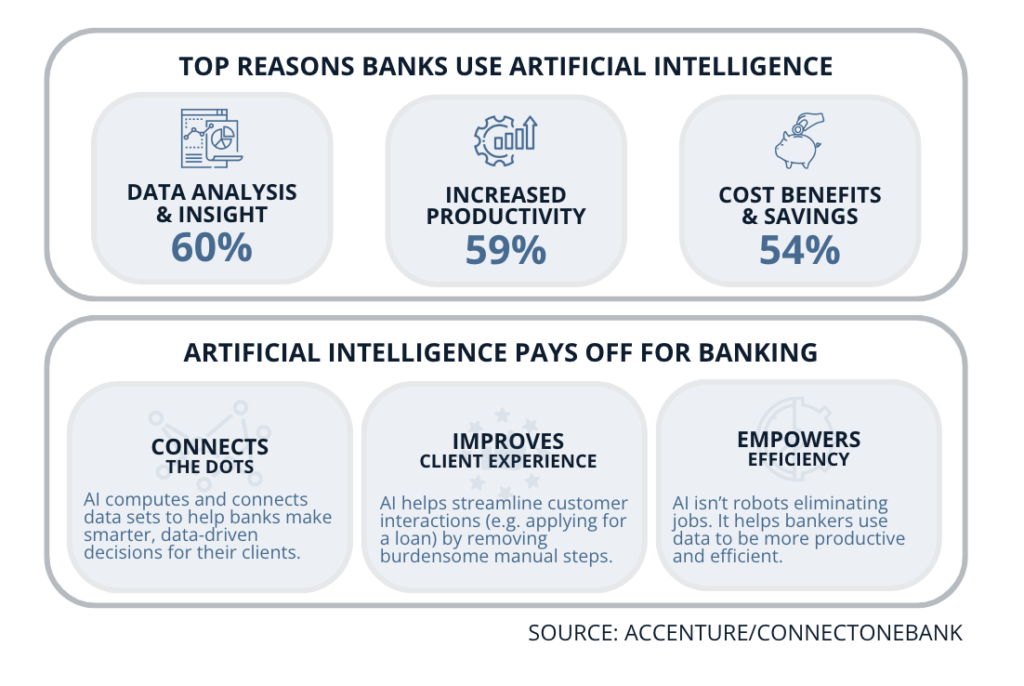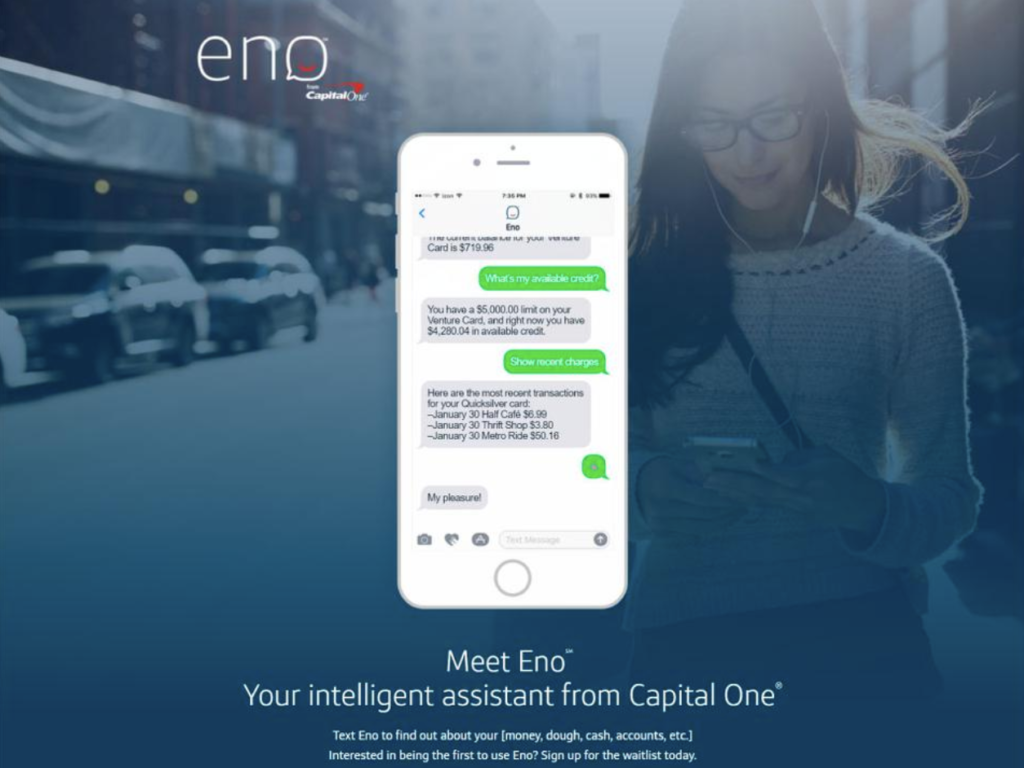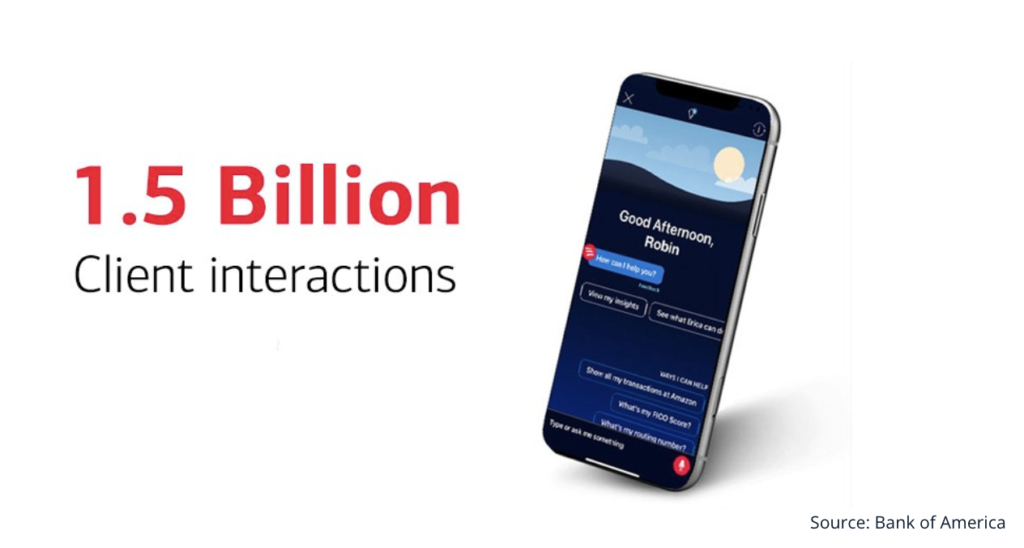
Will Legacy Banks Slow in Adopting AI Lose Their Customers?
A pressing question looms: Are legacy banks jeopardizing their customer base by shying away from AI? The banking industry stands at a critical juncture, where the adoption of generative AI could be the key to unlocking unprecedented growth and customer satisfaction.
Embracing Gen AI is Imperative for Legacy Banks to Thrive
Recent estimates suggest that AI can contribute between 2.8% and 4.7% of the industry’s annual revenues, equating to an additional $200 billion to $340 billion. Beyond the financial impact, integrating GenAI tools into the fabric of our financial services ecosystem will catalyze a major shift in customer satisfaction, decision-making, and risk management, making their adoption imperative for legacy banks.
The Rise of AI in Banking
Generative AI presents a promising overhaul of the way banks operate, offering 24/7 deep technical support and enabling service professionals to rapidly access relevant information to address customer requests instantaneously. The use of GenAI tools could significantly enhance customer satisfaction, improve decision-making, and enrich the employee experience, while also decreasing risks through better monitoring of fraud and risk.


-
- Hide or Remove Barriers
Providing personalized and accessible services to customers, such as language translation, makes financial services more inclusive and convenient for a wider range of individuals. - Document Verification
Efficient and accurate document verification reduces the risk of fraud and streamlines processes such as account opening, loan applications, and compliance checks. - Cognitive Process Automation
Automating processes such as data analysis, risk assessment, and customer service leads to increased efficiency, reduced errors, and cost savings. - Immediate Response and Support
Chatbots and virtual assistants provide customers with 24/7 access to information, account assistance, and basic transactional support. - Behavior Recognition
Analyzing patterns can detect unusual or suspicious activities and enhance fraud detection and security measures.
- Hide or Remove Barriers
The banking industry’s sustained digitization efforts, large customer-facing workforces, stringent regulatory environment, and white-collar industry make it well-positioned to integrate generative AI applications. Banks have been investing in technology for decades, accumulating a significant amount of technical debt along with a siloed and complex IT architecture. Additionally, banking relies on a large number of service representatives, such as call center agents and wealth management financial advisers. As a heavily regulated industry, banking has a substantial number of risk, compliance, and legal needs. Finally, generative AI’s impact could span the organization, assisting all employees in writing emails, creating business presentations, and other tasks.
The Impact of Generative AI on the Banking Industry
Leveraging AI-generated insights allows banks to identify opportunities, optimize strategies, and develop innovative products.
-
- Risk Management
AI algorithms continuously monitor and analyze data, detecting patterns, anomalies, and potential risks in real-time. Banks can proactively identify and mitigate risks such as fraud, money laundering, and cybersecurity threats. AI systems assess customer behavior and transactional data, initiating preventive measures promptly. - Cost Savings
AI automates routine tasks, reducing the need for human intervention and saving time and resources. Manual tasks like data entry and compliance checks are efficiently handled by AI algorithms, freeing up human resources. AI systems optimize processes, minimize errors, and reduce operational risks, resulting in cost savings. - Employee Experience
AI systems automate routine tasks, reducing the burden of mundane work and allowing employees to focus on strategic and creative aspects of their roles. This enhances employee satisfaction and engagement. AI-powered tools assist employees in data analysis, customer support, and compliance monitoring, improving productivity and efficiency. - Debt Collection and Recovery
AI algorithms analyze customer data, payment patterns, and historical trends to identify customers likely to default. Banks can take proactive measures to prevent default or initiate timely recovery actions based on early identification. - Streamlined Underwriting Process
Generative AI streamlines and automates the underwriting process, making it faster, more accurate, and more efficient. By analyzing loan applications, risk assessment, and creditworthiness, AI algorithms optimize the underwriting process, improving decision-making and customer experience. - Enhanced Customer Satisfaction
AI tools enable personalized and efficient service, addressing customer requests instantly and accurately. By analyzing customer data, transaction history, and preferences, banks can offer tailored recommendations and solutions, resulting in improved customer satisfaction. - Improved Decision-Making
AI algorithms analyze vast amounts of data, providing actionable insights and recommendations. This enables banks to make informed decisions promptly, adapt to market conditions, and stay ahead of the competition.
- Risk Management
Use Case
Legacy banks are actively adopting AI to improve customer service, risk management, and operational efficiency. Some notable examples include:

Capital One
Capital One introduced Eno, a virtual assistant that communicates with users through a mobile app, text, email, and on a desktop, to help with tasks like paying credit cards and tracking account balances. Eno uses advanced AI algorithms to understand customer requests, provide accurate responses, and perform transactions seamlessly.


Citibank
Citibank has partnered with Feedzai, a company that utilizes machine learning to help banks manage risk by monitoring transactions and raising red flags when necessary. Feedzai’s AI algorithms analyze vast amounts of transaction data in real-time, identifying suspicious activities and potential fraud. Using AI for risk management, Citibank can proactively detect and mitigate risks, protecting both customers and the bank itself.

BARCLAYS
Barclays led a $6 million funding round for Simudyne, an AI company that helps investment bankers spot high-impact events. Simudyne’s simulations enable bankers to model various scenarios and assess their potential impact on investment portfolios, risk exposure, and market dynamics. This AI implementation has helped Barclays make more informed and strategic investment decisions, improving performance and profitability.

JPMorgan Chase
JPMorgan Chase has invested heavily in AI, with its “funds transfer bots” alone estimated to save $300,000 annually in employee time. These AI-powered bots automate the funds transfer process, handling routine and repetitive tasks that were previously performed manually by employees. By streamlining the transfer process, JPMorgan Chase has not only achieved significant cost savings but also improved operational efficiency.

Bank of America
Bank of America implemented an AI-powered virtual assistant, Erica, to assist customers with their banking needs. Erica can answer customer questions, provide financial advice, and help customers manage their accounts. This AI-driven solution has improved customer satisfaction and loyalty, as well as reducing the workload of customer service representatives. Erica has enabled the bank to provide personalized and efficient service to its customers.

Future Trends and Innovations
Advanced AI technologies, including reinforcement learning, deep learning, and natural language processing, are already being adopted across financial services. As AI solutions become the norm, the future of banking will witness its integration with other emerging technologies, where AI-driven innovations will streamline the industry’s operations, optimize customer experiences, and improve financial services as a whole.

Strategies for Legacy Banks
1. Invest
To remain competitive, legacy banks must invest in modern technology and infrastructure. This includes upgrading their existing systems, such as core banking platforms, to ensure compatibility with generative AI solutions. By investing in modern technology, banks can reduce the risk of technical debt and ensure that their systems are scalable and adaptable to future AI innovations.
2. Embrace
Legacy banks must encourage employees to adopt new technologies and promote a growth mindset by providing ongoing training and development opportunities and encouraging employees to take risks and experiment with new ideas. By creating an environment that supports innovation, banks can attract and retain top talent and ensure that their employees are equipped with the skills and knowledge needed to drive success in the AI-driven banking ecosystem.
3. Collaborate
Legacy banks must collaborate with fintechs and startups to stay ahead of the curve and gain access to innovative AI solutions. By partnering with fintechs and startups, banks can leverage their agility, creativity, and technical expertise to develop and implement AI solutions that meet the evolving needs of their customers. Collaborating with fintechs and startups can also help banks identify new opportunities for growth and innovation.
4. Regulations
Legacy banks must ensure that their AI systems are compliant with regulatory requirements and ethical standards and that they have robust data privacy and security measures in place. By addressing regulatory concerns and data privacy, banks can build trust with their customers and maintain their reputation as responsible and trustworthy institutions.
Ethical Considerations & Regulations
The adoption of AI in banking necessitates careful attention to ethical considerations. Data privacy is a paramount concern, as banks handle vast amounts of sensitive customer information. To mitigate risks, banks must prioritize data protection measures, robust encryption, and secure data storage to safeguard customer data from unauthorized access. Regulators recognize the need to balance innovation with consumer protection and fair practices. Existing regulations, including the General Data Protection Regulation (GDPR), already provide guidelines for data protection and privacy. However, regulatory bodies are still actively working on ethical AI principles and guidelines. These principles emphasize aspects such as fairness, transparency, accountability, and the responsible use of AI.
Addressing algorithmic bias is another critical ethical concern. AI algorithms trained on historical data may inherit biases, potentially resulting in unfair and discriminatory outcomes. Banks must implement rigorous testing and validation processes to detect and mitigate biases in their AI models. This helps ensure fairness and prevent the perpetuation of biases in decision-making processes.
Transparency and explainability of AI systems are essential to build trust with customers and regulators. Banks should strive to make their AI models and decisions understandable to both customers and regulatory bodies. By providing clear explanations, banks can address concerns related to biases, errors, or unexpected outcomes. Transparent AI systems foster accountability and empower customers to challenge decisions if necessary.

What does this mean for legacy banks?
The potential impact of generative AI on the banking industry is immense, and legacy banks that embrace this technology stand to gain a significant competitive advantage. Legacy banks that fail to adopt AI risk falling behind their competitors and losing market share. Fintechs and neobanks, which are often more agile and innovative than traditional banks, are already leveraging AI to provide personalized and efficient service to their customers. By contrast, legacy banks that are slow to adopt AI may struggle to keep up with customer expectations and may lose customers to more innovative and customer-centric competitors.
In addition to losing market share, legacy banks that fail to adopt AI may also miss out on opportunities for innovation and growth. By failing to adopt AI, legacy banks may struggle to remain competitive. Customers expect their banks to leverage the latest technologies to provide personalized and efficient service, and failure to do so may result in negative perceptions of the bank’s brand and reputation. By adopting generative AI, legacy banks can drive financial growth, enhance customer satisfaction, improve decision-making, and mitigate risks. The time is now for legacy banks to recognize the imperative of embracing generative AI to thrive in an increasingly competitive and customer-centric system.